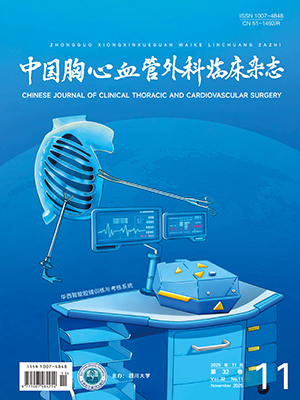| 1. |
国务院办公厅关于加强三级公立医院绩效考核工作的意见. 中华人民共和国国务院公报, 2019, 5: 22-30.Opinions of the General Office of the State Council of the People's Republic of China on strengthening performance assessment in three-tier public hospitals. Gaz State Counc China, 2019, 5: 22-30.
|
| 2. |
倪平, 石莲桂, 任晓华, 等. 基于DEA-BCC和Malmquist指数模型的外科科室运行效率评价. 中国卫生统计, 2024, 41(6): 901-904.Ni P, Shi LG, Ren XH, et al. Evaluation of operational efficiency in surgical departments based on DEA-BCC and Malmquist index models. Chin J Health Stat, 2024, 41(6): 901-904.
|
| 3. |
王子钒, 张玉联, 罗仕伟, 等. 基于DEA-BCC模型和Malmquist指数模型的我国西部地区医疗资源评价分析. 卫生软科学, 2022, 36(2): 52-55.Wang ZF, Zhang YL, Luo SW, et al. Evaluation and analysis of medical resources in western China based on DEA-BCC and Malmquist index models. Soft Sci Health, 2022, 36(2): 52-55.
|
| 4. |
张振, 李祥飞. 基于DEA-BCC模型的天津市三级医院DRG运行效率研究. 中国公共卫生管理, 2024, 40(3): 334-338.Zhang Z, Li XF. Research on DRG operational efficiency of tertiary hospitals in Tianjin based on DEA-BCC model. Chin J Public Health Manag, 2024, 40(3): 334-338.
|
| 5. |
陈志华, 麦一峰, 刘海容. 基于DEA-BCC模型和DEA-Malmquist动态指数的宁波市各区卫生资源配置效率评价. 现代医院, 2022, 22(11): 1652-1655.Chen ZH, Mai YF, Liu HR. Evaluation of health resource allocation efficiency in Ningbo districts based on DEA-BCC model and DEA-Malmquist dynamic index. Mod Hosp, 2022, 22(11): 1652-1655.
|
| 6. |
Du T, Li J, Qiao Y. DEA-based centralized resource allocation with a balance between efficiency and equity: evidence from healthcare services across 31 provinces in China. Health Care Manag Sci, 2025, 28(1): 119-141.
|
| 7. |
张伟, 石莲桂, 王栋, 等. 三级公立医院绩效考核外科功能定位贡献评价模型探索分析. 中国卫生统计, 2023, 40(4): 567-569.Zhang W, Shi LG, Wang D, et al. Exploratory analysis of an evaluation model for the contribution of functional positioning in surgical departments under the performance appraisal of tertiary public hospitals. Chin J Health Stat, 2023, 40(4): 567-569.
|
| 8. |
严娟, 赵啸宇, 戴卉, 等. 三级公立医院四级手术复合评价指标的构建与应用: 四级手术贡献度. 中华医院管理杂志, 2024, 40(8): 599-603.Yan J, Zhao XY, Dai H, et al. Construction and application of a composite evaluation indicator for major surgeries in tertiary public hospitals: contribution rate of major surgeries. Chin J Hosp Adm, 2024, 40(8): 599-603.
|
| 9. |
吴舒婷, 林孟波, 吴雄伟, 等. DRG支付方式下某三级医院外科运行效率及影响因素研究. 江苏卫生事业管理, 2023, 34(3): 357-360.Wu ST, Lin MB, Wu XW, et al. Operational efficiency and influencing factors of a tertiary hospital's surgical department under DRG payment reform. Jiangsu Healthc Adm, 2023, 34(3): 357-360.
|
| 10. |
王彤璐, 袁飞, 傅瑶, 等. 基于数据包络分析的中医医院临床科室运行效率研究. 卫生经济研究, 2022, 39(9): 24-27.Wang TL, Yuan F, Fu Y, et al. Research on operational efficiency of clinical departments in traditional Chinese medicine hospitals based on data envelopment analysis. Health Econ Res, 2022, 39(9): 24-27.
|
| 11. |
严妍, 康晓征, 李成强, 等. 机器人食管Ivor Lewis手术的临床应用. 机器人外科学杂志(中英文), 2025, 6(2): 319-331.Yan Y, Kang XZ, Li CQ, et al. Clinical application of robotic Ivor Lewis esophagectomy. Chin J Robot Surg, 2025, 6(2): 319-331.
|
| 12. |
卢泓. 公立医院专科运营助理模式的实践探索. 卫生经济研究, 2024, 41(10): 83-85.Lu H. Practical exploration of specialist operation assistant mode in public hospitals. Health Econ Res, 2024, 41(10): 83-85.
|
| 13. |
张秋艳, 杨城, 刘伟新, 等. 专科医院运营管理模式创新研究. 卫生经济研究, 2024, 41(1): 77-80.Zhang QY, Yang C, Liu WX, et al. Research on innovation of operational management model in specialized hospitals. Health Econ Res, 2024, 41(1): 77-80.
|
| 14. |
关于加强公立医院运营管理的指导意见. 中华人民共和国国家卫生健康委员会公报, 2020, 12: 193-196.National Health Commission of the People’s Republic of China. Guiding opinions on strengthening operational management of public hospitals. Gaz Natl Health Comm China, 2020, 12: 193-196.
|




